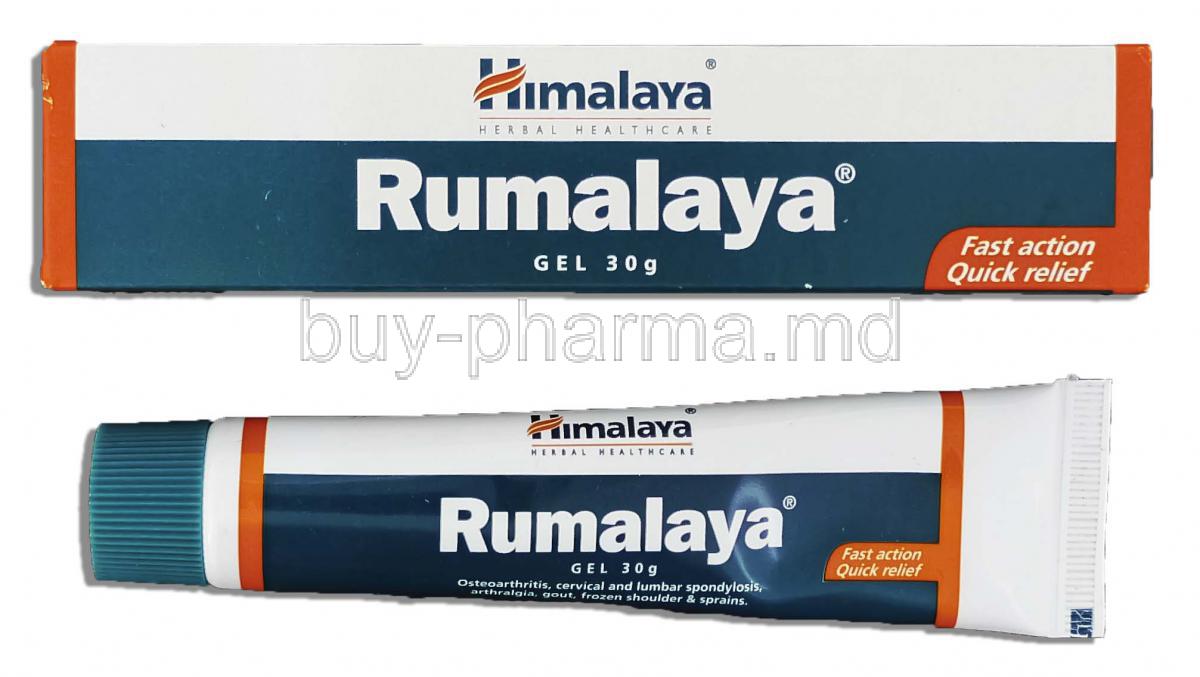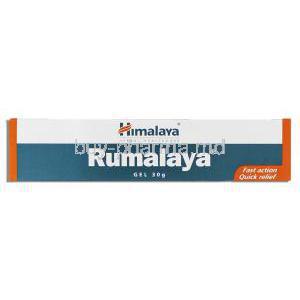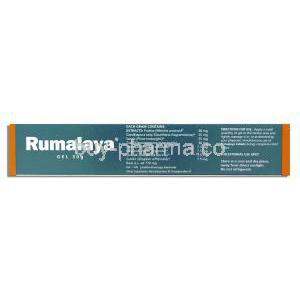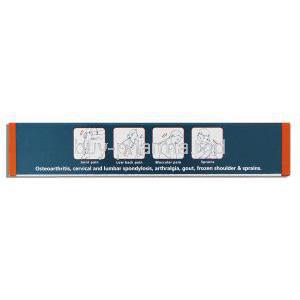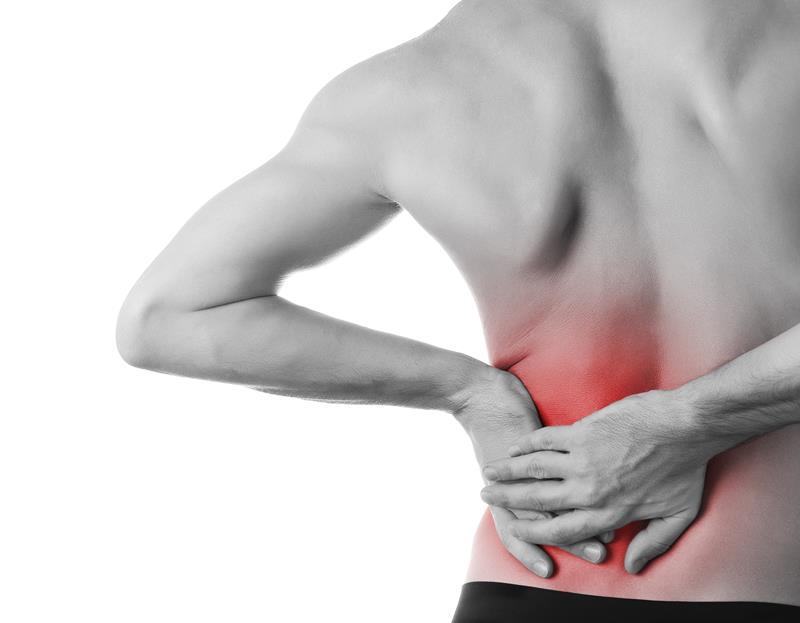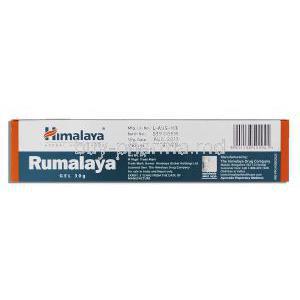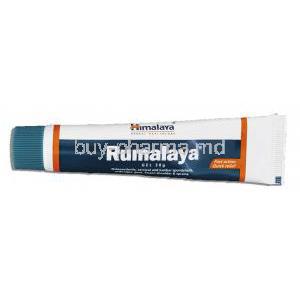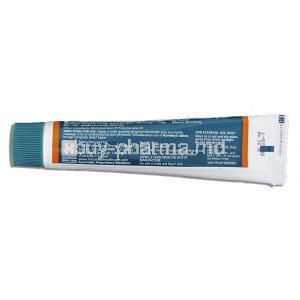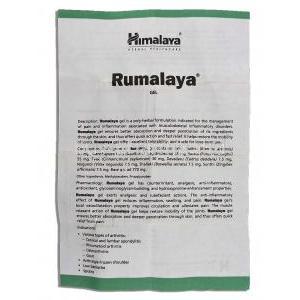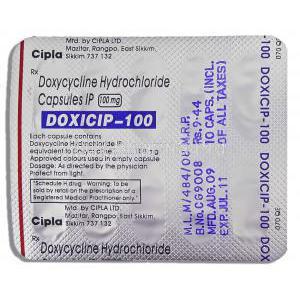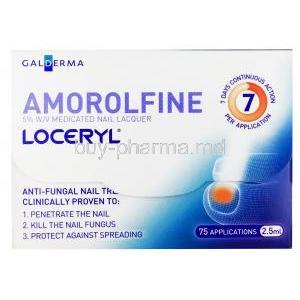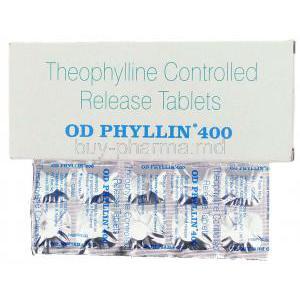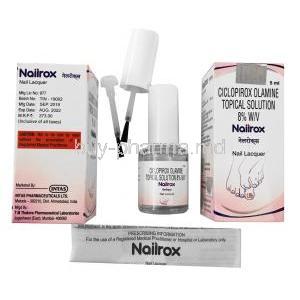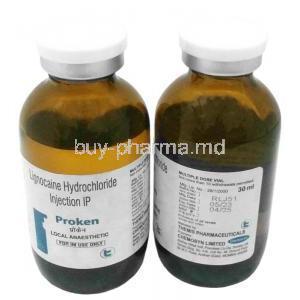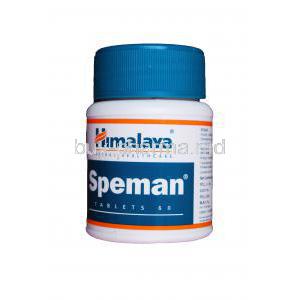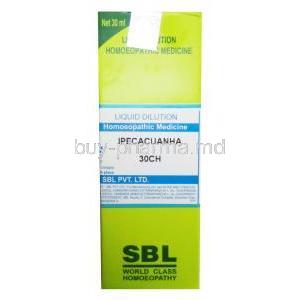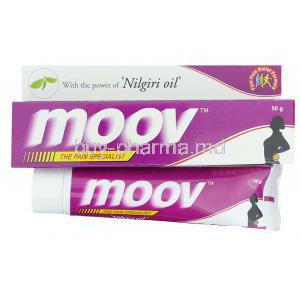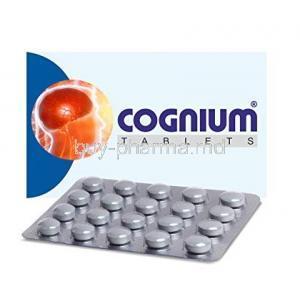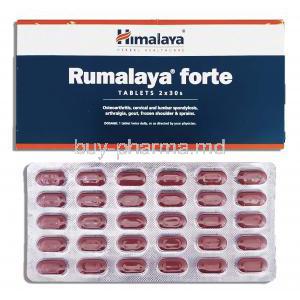Himalaya Rumalaya Gel
- Introduction to Himalaya Rumalaya Gel
- Detailed Composition and Active Herbal Ingredients
- How Rumalaya Gel Works: Mechanism of Action
- Primary Medical Uses of Himalaya Rumalaya Gel
- Off-Label and Alternative Uses of Rumalaya Gel
- Dosage Guidelines and Proper Administration
- Common and Notable Side Effects of Rumalaya Gel
- Contraindications: When Not to Use Rumalaya Gel
- Drug and Herbal Interaction Considerations
- Important Warnings and Cautions Before Use
- Special Precautions for Careful Administration
- Use in Special Populations
- Guidelines for Handling and Storage of Rumalaya Gel
- Overdose and Accidental Ingestion Risks
- Safe Handling Instructions and Disposal
Introduction to Himalaya Rumalaya Gel
Overview of Rumalaya Gel as a Topical Phytotherapeutic Formulation
Rumalaya Gel is a topical preparation formulated using a blend of medicinal plant extracts traditionally used in Ayurvedic medicine. This non-greasy gel penetrates quickly into the skin, targeting musculoskeletal discomfort without the adverse systemic effects commonly associated with oral analgesics.
Therapeutic Goals: Musculoskeletal Pain Relief and Anti-Inflammatory Benefits
The primary therapeutic objectives of Rumalaya Gel are to:
- Alleviate joint and muscle pain
- Reduce local inflammation and swelling
- Enhance mobility and flexibility
It serves as an adjunct to physiotherapy and other conservative treatments for chronic and acute pain syndromes.
Popularity in Ayurveda-Inspired Pain Management
Harnessing centuries-old Ayurvedic principles, Rumalaya Gel has gained wide acceptance in integrative medicine circles. It is especially favored by individuals seeking herbal alternatives to synthetic non-steroidal anti-inflammatory drugs (NSAIDs).
Detailed Composition and Active Herbal Ingredients
List of Key Herbal Actives
Key botanical ingredients include:
- Boswellia serrata: Renowned for its anti-inflammatory boswellic acids
- Gaultheria fragrantissima (Indian Wintergreen): A natural source of methyl salicylate for topical analgesia
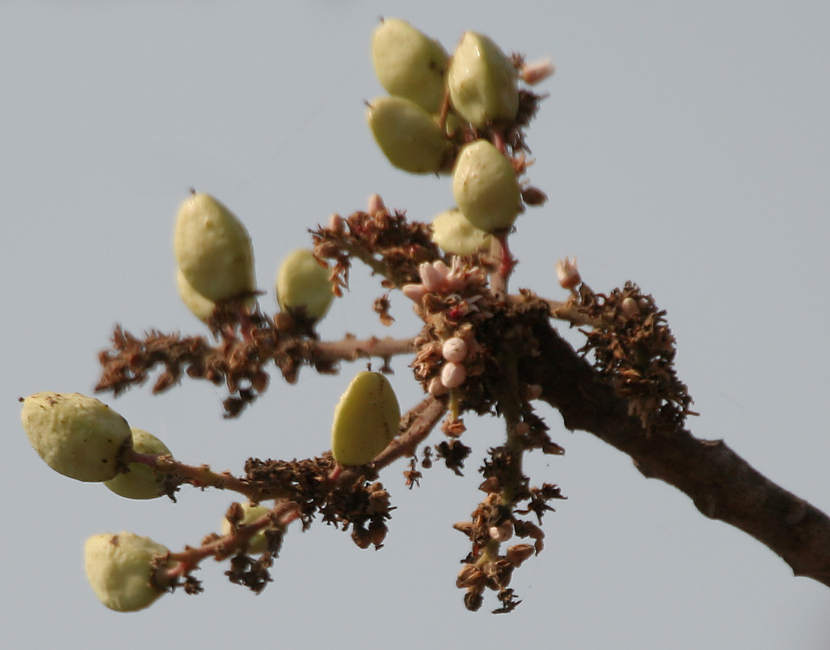
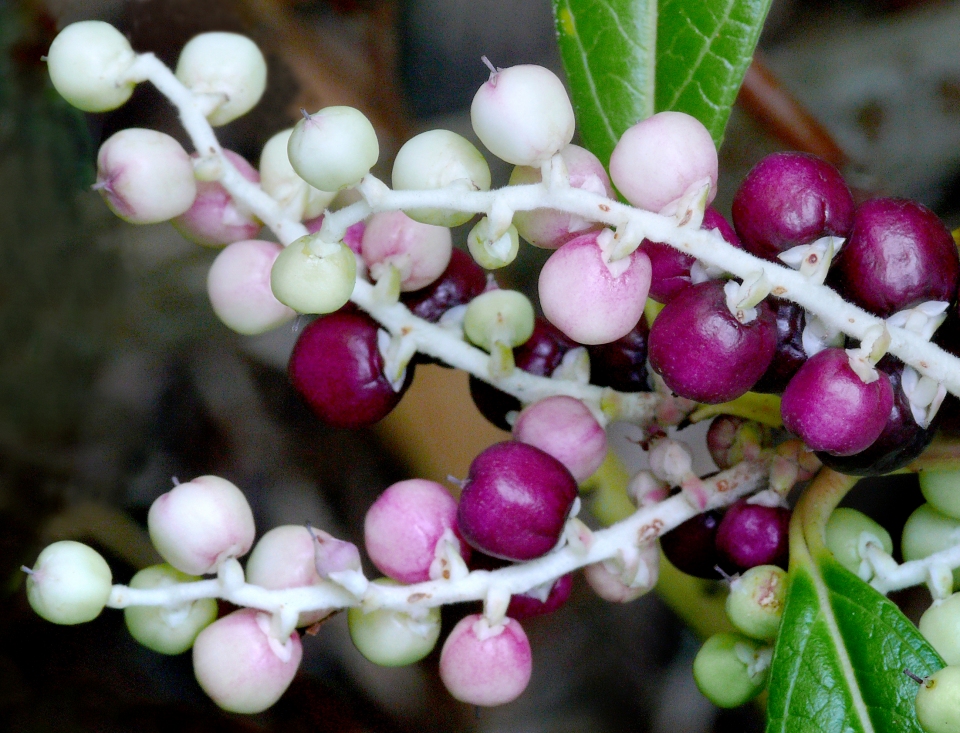
Role of Each Component in Analgesic and Anti-Inflammatory Action
- Boswellia serrata inhibits 5-lipoxygenase activity, thereby reducing leukotriene synthesis and joint inflammation.
- Indian Wintergreen oil provides a warming, counterirritant effect that distracts pain signals and soothes sore muscles.
Additional Excipients and Their Function in Topical Delivery
The gel base includes fast-absorbing, non-comedogenic carriers that facilitate deeper tissue penetration. It also contains stabilizers and humectants to preserve consistency and shelf life.
How Rumalaya Gel Works: Mechanism of Action
Pharmacodynamic Properties of Herbal Actives
Rumalaya Gel exerts its therapeutic effects by modulating inflammatory pathways, inhibiting prostaglandin synthesis, and desensitizing nociceptors in the affected area.
Local Action on Inflammation, Pain Mediators, and Muscle Stiffness
The gel acts locally to diminish edema, block pain-transmitting neuropeptides, and relax tense muscular fibers. This leads to prompt relief from stiffness and discomfort.
Absorption Kinetics and Interaction with Soft Tissue Receptors
The active constituents rapidly permeate the stratum corneum and reach subdermal tissues. They interact with peripheral receptors and vascular networks to modulate inflammation and pain signaling at the source.
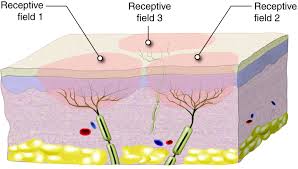
Primary Medical Uses of Himalaya Rumalaya Gel
Indications for Arthritis-Related Joint Pain
Rumalaya Gel is commonly used in:
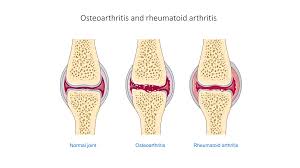
Use in Backaches, Muscular Sprains, Sciatica, and Sports Injuries
The gel provides temporary relief from:
- Acute and chronic low back pain
- Sports-related muscular strains and contusions
- Sciatic nerve-related discomfort
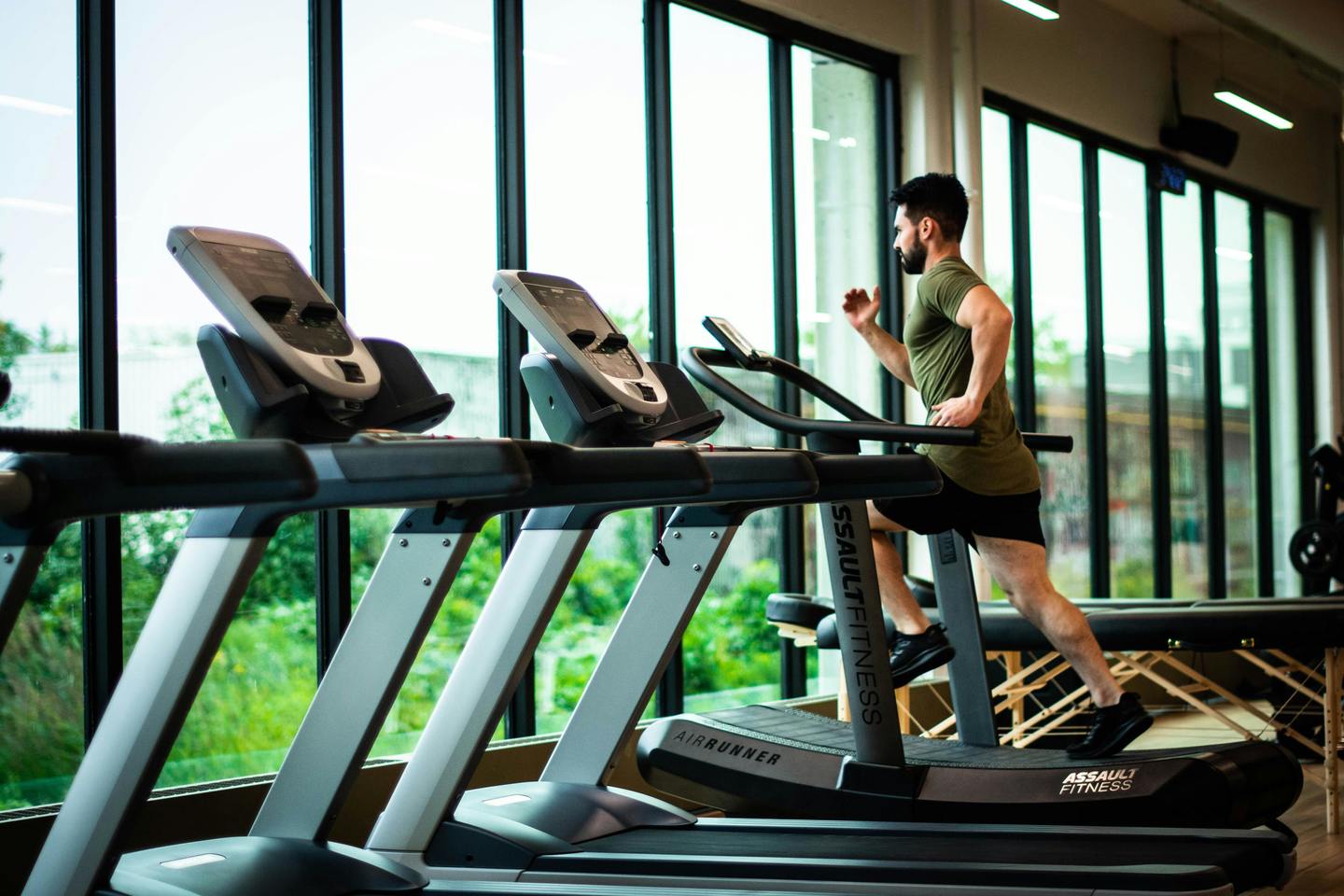
Application in Managing Post-Traumatic Soft Tissue Inflammation
Off-Label and Alternative Uses of Rumalaya Gel
Anecdotal Use in Chronic Tension Headaches
Some users report symptomatic relief by applying the gel to the neck and shoulder regions during tension-type headaches.
Potential Relief in Fibromyalgia-Related Localized Pain
Though not formally approved, anecdotal use in fibromyalgia-prone areas like the upper back and thighs has been noted.
Minor Use in Treating Repetitive Strain Injury Discomfort
Cases of computer-related wrist or elbow pain (e.g., carpal tunnel syndrome) may benefit from adjunct topical application.
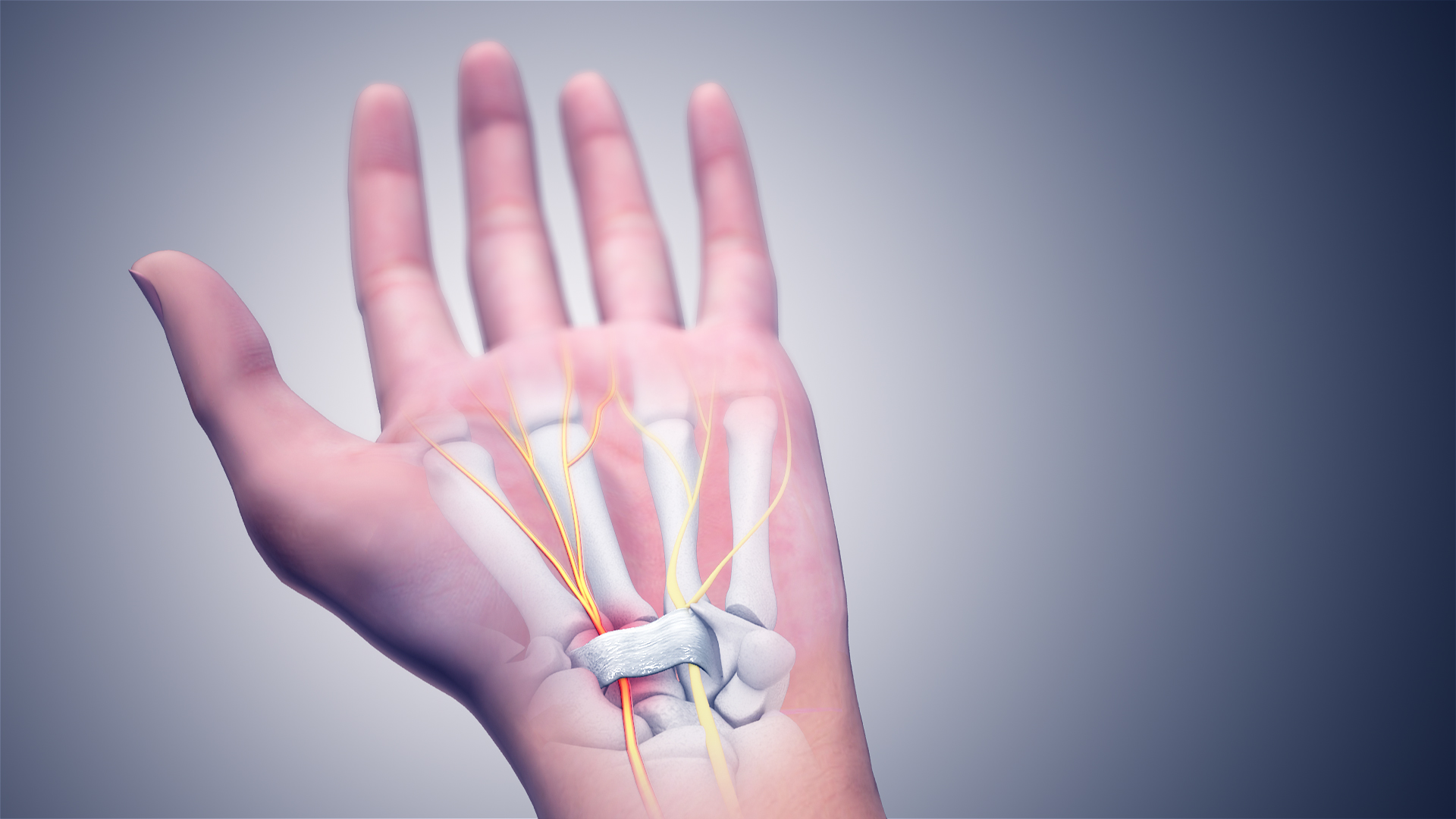
Dosage Guidelines and Proper Administration
Recommended Amount per Application and Frequency
Apply a small quantity (pea-sized) 2-3 times daily on the affected area, depending on symptom severity and physician guidance.
Best Practices for Application
- Massage gently in circular motion until fully absorbed
- Do not apply over cuts, abrasions, or infected skin
- Avoid covering the area with airtight dressings unless instructed
Duration of Therapy Based on Symptom Severity
Short-term use (1-2 weeks) is typical for acute injuries, while chronic pain may require intermittent or prolonged usage under supervision.
Common and Notable Side Effects of Rumalaya Gel
Frequently Reported Mild Reactions
- Transient burning or tingling sensation
- Mild erythema at the application site
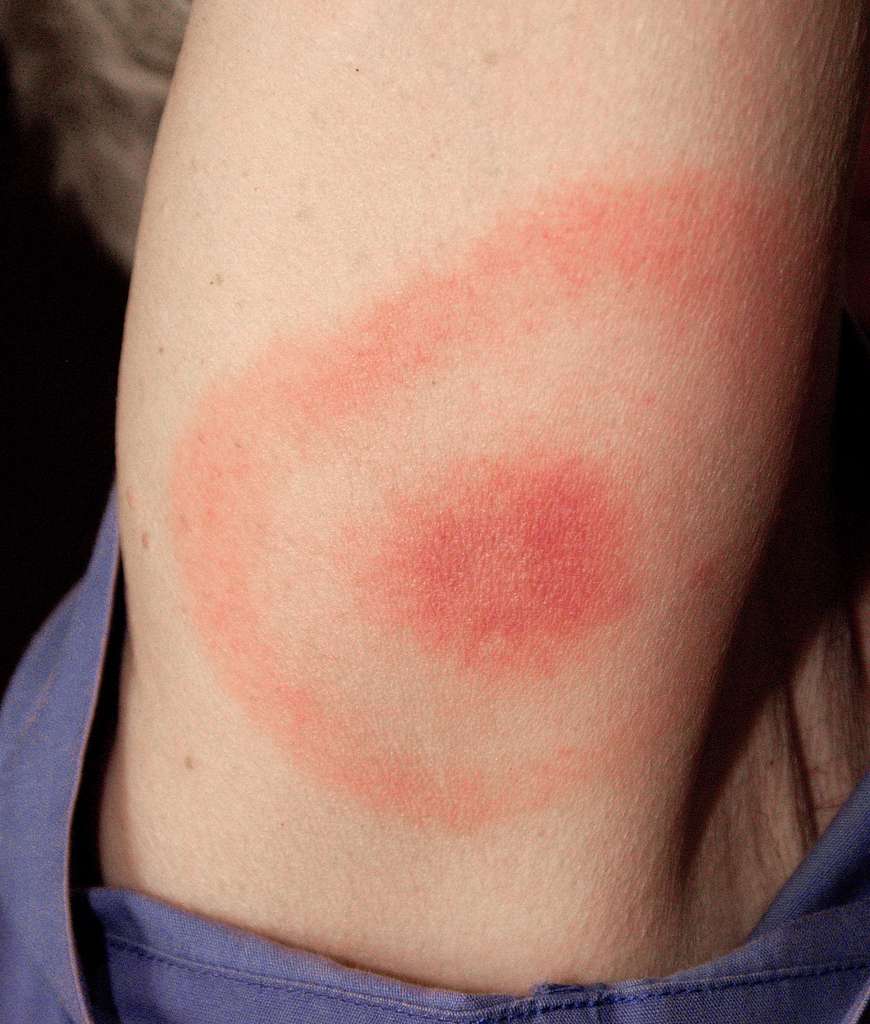
Allergic Responses in Sensitive Individuals
Individuals with sensitivity to menthol or herbal oils may experience itching, swelling, or localized rash.
Skin Dryness or Rash with Prolonged Use
Extended use without adequate moisturization may cause dryness or mild desquamation.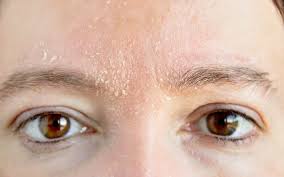
Contraindications: When Not to Use Rumalaya Gel
Known Hypersensitivity to Any Herbal or Base Ingredients
Avoid if allergic to salicylates, Boswellia, or wintergreen oil.
Application on Broken, Infected, or Inflamed Skin
Do not apply to wounds, eczema, or pustular skin conditions.
Patients with History of Severe Dermatological Reactions
Use is contraindicated in individuals with a history of contact dermatitis or severe cutaneous reactions to topical agents.
Drug and Herbal Interaction Considerations
Risk of Compounding Effects with NSAID Creams or Steroids
Concurrent use with other topical anti-inflammatory agents may increase irritation or systemic absorption.
Herbal Synergy or Antagonism with Internal Medications
Herbal components may potentiate effects of oral anticoagulants or anti-inflammatory drugs.
Recommendations for Spacing Applications from Other Topical Agents
It is advisable to allow a 30-60 minute interval between Rumalaya Gel and other topicals to avoid interactions or dilution.
Important Warnings and Cautions Before Use
Avoidance Near Eyes, Mucous Membranes, or Open Wounds
Do not apply near eyes, nose, or genital area to prevent irritation.
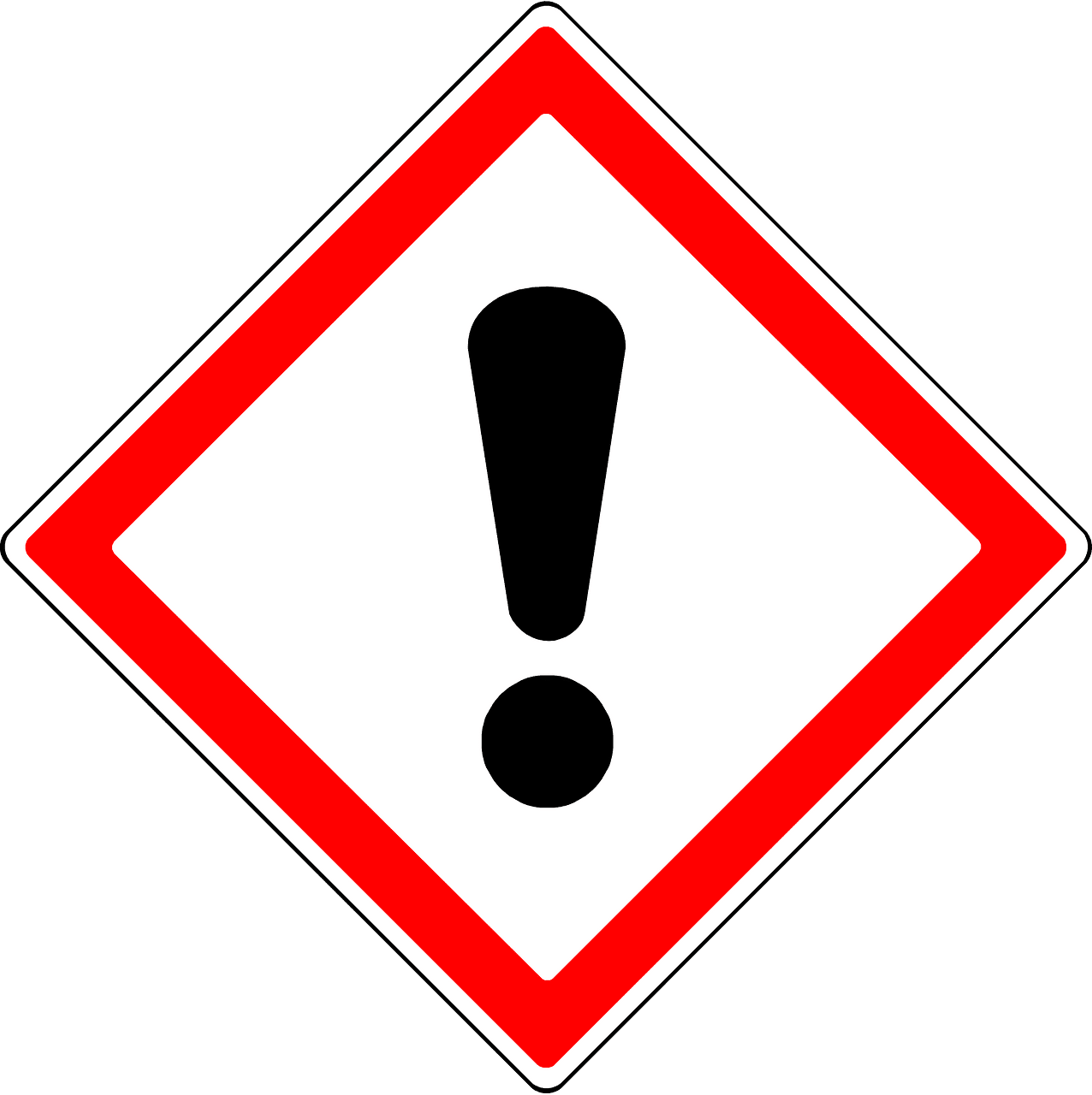
Risk of Systemic Absorption with Excessive Application
Excessive or frequent application over large surface areas may lead to unwanted systemic effects.
Discontinue Use if Irritation Worsens After 3 Days
Persistent redness, swelling, or blistering warrants discontinuation and medical evaluation.

Special Precautions for Careful Administration
1. Patients with Pre-Existing Skin Conditions
Individuals with underlying dermatological disorders such as eczema, psoriasis, or chronic dermatitis should exercise heightened caution when using Rumalaya Gel. These conditions compromise the skin barrier, making it more permeable and reactive to topical agents.
- Perform a patch test before full-scale application.
- Discontinue immediately upon signs of exacerbated inflammation, flaking, or vesiculation.
- Consult a dermatologist if using concurrently with corticosteroid creams.
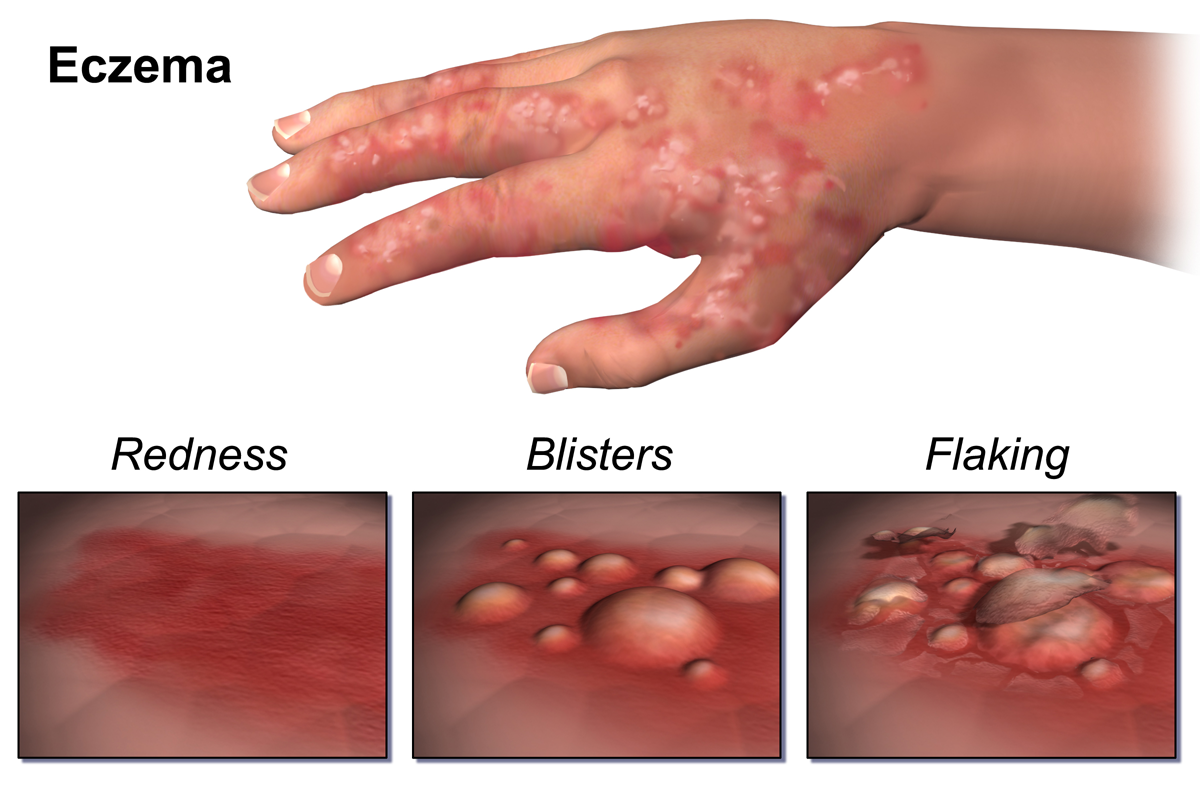
2. Polyherbal Therapy Considerations
Rumalaya Gel contains multiple botanicals that may pharmacodynamically overlap with other oral or topical herbal supplements. When used in conjunction with internal anti-inflammatory agents such as Boswellia capsules or curcumin extracts:
- Monitor for amplified systemic effects or allergic responses.
- Avoid simultaneous application of similar anti-inflammatory topicals to prevent dermal overload.
- Coordinate usage schedules under professional supervision to mitigate herb-herb interaction risk.
Use in Special Populations
1. Elderly Patients
Aging skin exhibits reduced elasticity, slower regenerative capacity, and thinner epidermal layers, increasing the risk of irritation.
- Use a reduced quantity over a smaller surface area.
- Limit application frequency to avoid cumulative dermal stress.
- Assess for signs of bruising or delayed healing after use.
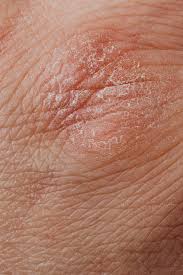
2. Pregnant and Nursing Women
Current clinical data on Rumalaya Gel use during pregnancy and lactation remains insufficient.
- Not recommended for use over the abdominal, lumbar, or breast region due to potential fetal or infant exposure.
- Consult a healthcare provider before incorporating into pain management routines.
- Avoid usage during the first trimester or while breastfeeding unless absolutely necessary and under medical supervision.
3. Pediatric Use
The safety and efficacy of Rumalaya Gel in children have not been adequately established.
- Not advised for use in children under 12 years of age unless prescribed by a pediatric specialist.
- Pediatric skin is more permeable, increasing systemic absorption risk.
- Accidental ingestion or ocular exposure may lead to adverse events and requires immediate medical attention.
Guidelines for Handling and Storage of Rumalaya Gel
Store Below 30°C in a Dry, Dark Place
To preserve the stability and potency of herbal constituents:
- Maintain in a cool cabinet or drawer, away from heating appliances.
- Protect from excessive temperature fluctuations and humidity exposure.
Avoid Direct Sunlight and High Humidity
Photodegradation and moisture contamination can compromise efficacy and texture.
Keep Container Tightly Closed and Out of Children's Reach
After each use, ensure the cap is sealed to prevent contamination and accidental access by minors.
Overdose and Accidental Ingestion Risks
Symptoms of Overuse
Prolonged or excessive application may result in:
- Severe localized irritation or contact dermatitis
- Chemical burns or photosensitivity reactions
Management of Accidental Oral Ingestion in Children
If swallowed, Rumalaya Gel may cause gastrointestinal discomfort, nausea, or toxicity depending on quantity.
- Do not induce vomiting.
- Rinse mouth and seek immediate pediatric evaluation.
Emergency Response Protocols for Adverse Reactions
In case of serious dermal or systemic reactions:
- Discontinue use immediately.
- Apply cool compress to the affected area.
- Visit an emergency facility if symptoms escalate or persist.
Safe Handling Instructions and Disposal
Wash Hands After Use
After applying the gel, thoroughly cleanse hands with soap and water to prevent accidental contact with sensitive areas like eyes or mouth.
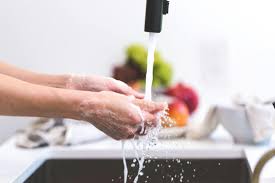
Avoid Sharing with Others to Prevent Cross-Contamination
Topical medications should be considered personal-use items. Shared use can introduce pathogens or allergens to the product surface.
Proper Disposal of Expired or Unused Product
- Do not flush or pour into drains unless instructed.
- Dispose of in accordance with local waste disposal regulations.
- Use designated pharmaceutical disposal bins when available.
Himalaya Rumalaya Gel FAQ
What is Rumalaya used for?
The Himalaya Rumalaya Gel is a gel that helps alleviate pain, reduce swelling, and combat inflammation in areas such as the shoulders, neck joints, knees, and ankles.
What is Himalaya Rumalaya Gel used for?
The Himalaya Rumalaya Gel is a gel that helps alleviate pain, reduce swelling, and combat inflammation in areas such as the shoulders, neck joints, knees, and ankles.
What are the benefits of Himalaya Rumalaya?
The Himalaya Rumalaya contains Boswellia (Shalaki), known to enhance health and strengthen blood vessels in the body.
How do you use Himalaya gel?
Rub the gel onto the area. Softly massage it until its fully absorbed.

